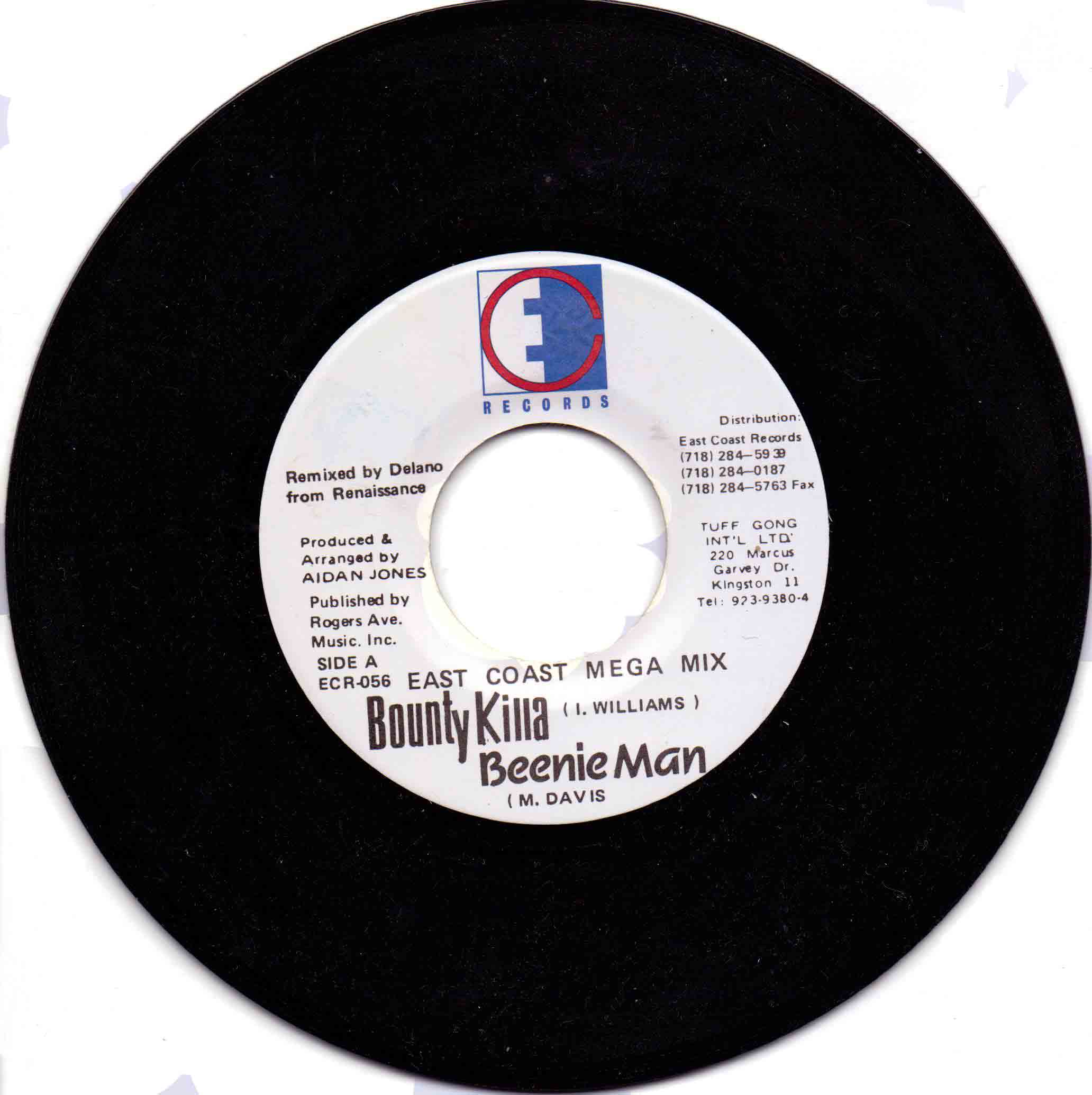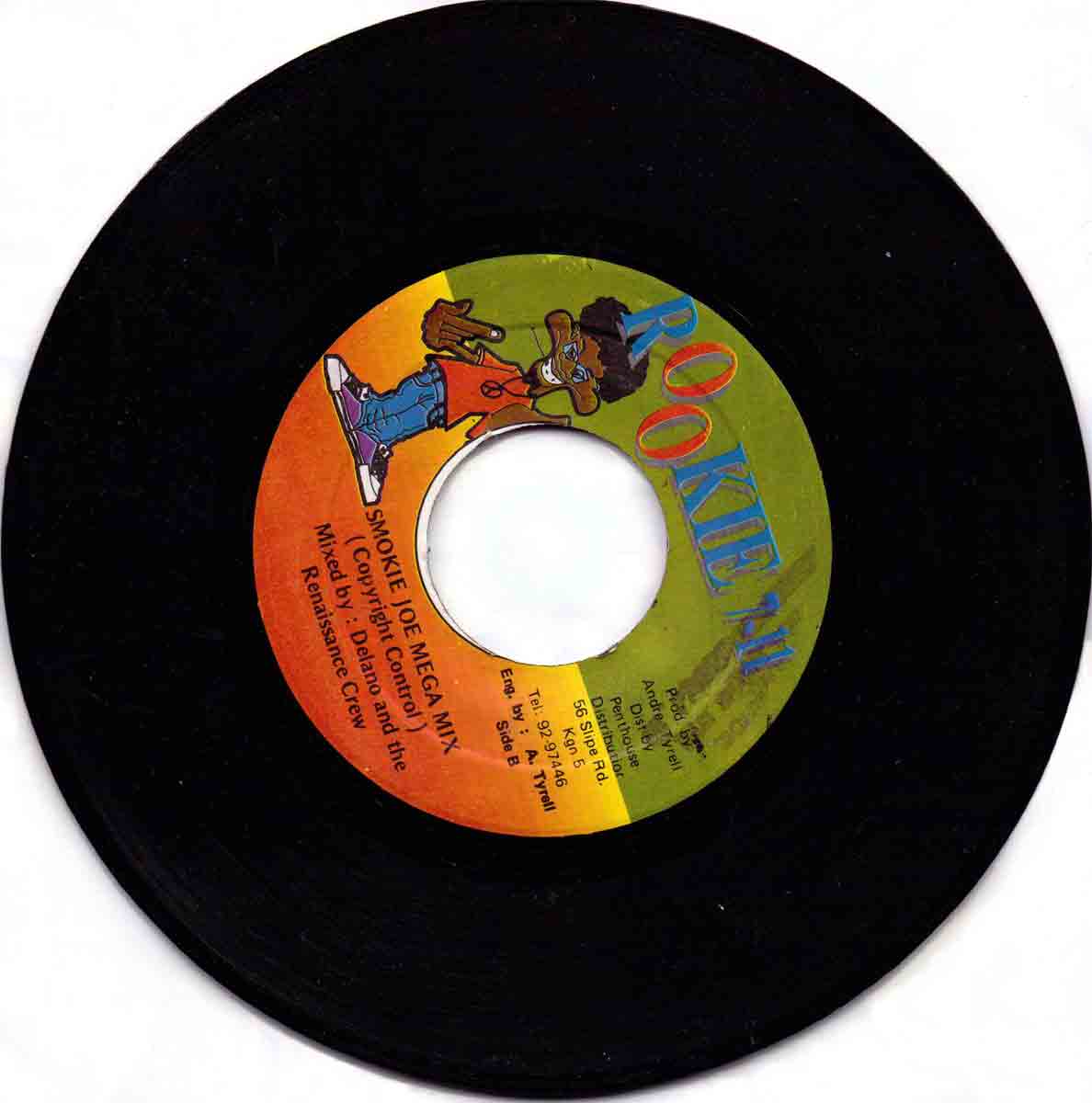THE BRIEF LIFE OF THE MEGAMIX SINGLE
 The megamix, in which a series of tunes are segued together seamlessly,
entered reggae when sound systems like Delano Thomas’s Renaissance
replaced the single turntable traditional to Jamaican dancehall culture
with the twin decks associated with American and European discos.
There was then no longer the need for a few second pause between one
tune and the next. Once established in the dancehall, the practice soon
transferred to vinyl/CD, when the already popular one-riddim or version
album was complimented by its megamix counterpart.
The megamix, in which a series of tunes are segued together seamlessly,
entered reggae when sound systems like Delano Thomas’s Renaissance
replaced the single turntable traditional to Jamaican dancehall culture
with the twin decks associated with American and European discos.
There was then no longer the need for a few second pause between one
tune and the next. Once established in the dancehall, the practice soon
transferred to vinyl/CD, when the already popular one-riddim or version
album was complimented by its megamix counterpart.
Well-received early examples of this included
Trevor ‘Uncle T’ James’s Miss Ivy Meg Mix, which appeared in 1995 with
a modest (by later standards) 11 cuts of Bounty Killer’s “Miss Ivy Last
Son” dancehall hit, followed the next year by Dave ‘Rudeboy’ Kelly’s
Pepper Seed Jam (with no less than 26 edited performances of the said
track) and Arabian Jam (featuring 31 tracks divided evenly between the
“Arab Attack” and “Heartbeat” riddims).
Further notable megamixes to appear on album
included Dancehall Xplosion ’99 and Dancehall Xplosion 2000, released
on JamDown, both of which segued together hits from a variety of
producers, including Richard Browne, Richie Stephens and the
aforementioned Dave ‘Rudeboy’ Kelly. Soon one of the other label
bosses whose work was featured on the Dancehall Explosion sets, Donovan
Germain went on to release an entire series of Party Mixes, numbering
nine at the last count. Some of these Penthouse sets were mixed
by the ever-reliable Delano Thomas, while for others such alternate
masters of the turntable as Mixmaster Steve of Stur-gav, Jason
‘Zigzagula’ Henriques of Copperhead Disco and Miami’s King Waggy T were
brought in to work their magic at the controls.
The megamix 7” singles never enjoyed quite the
prolificacy of such albums but did enjoy a brief moment of glory in
1996, with occasional additions to the genre making sporadic
appearances thereafter. As Bounty Killer was the hottest deejay
of the time, challenged only by Beenie Man, it’s not too surprising to
find his hits featured on the earliest of these - nor that Delano
Thomas was credited with mixing both “Mega Nitro Mix” (Fat Eyes), which
employed the “Stucky” rhythm to good effect, and “East Coast Mega Mix”
(East Coast), over Sly Dunbar and Jazwad’s “Mecca.” On the
latter the arch rivals actually had the opportunity not so much to
battle it out head to head on the same 7” piece of vinyl, as complement
each other’s considerable talents with some of their recent hits in
edited form.
The most striking megamix 45s after these two
pioneering efforts probably came with “Big Squa Mega Mix” (Rookie 7-11)
and “Murder Mega Mix” (Taxi), again both mixed by Delano Thomas.
No prices for guessing the Sly & Robbie riddim employed on the
latter; the former, however, might be less familiar to anyone who
wasn’t a dedicated dancehall follower during the 1990s, utilizing as it
does the relatively obscure but still smoking “Smokie Joe” riddim from
Andre Tyrell, the most popular cut of which was Wayne Wonder’s “Taking
Control.”
There were never quite enough megamix singles
to constitute a fully-fledged trend, but listening to the above
examples almost two decades after their original appearance must raise
the question of why many more producers didn’t follow suit. But, it's hard to imagine
a better taste of genuine dancehall excitement in the comfort of your
own living room, especially as none lasts long
enough to get boring.
Peter Dalton

HOME PAGE
FEATURES
REVIEWS
BULLETIN BOARD
LINKS
 The megamix, in which a series of tunes are segued together seamlessly,
entered reggae when sound systems like Delano Thomas’s Renaissance
replaced the single turntable traditional to Jamaican dancehall culture
with the twin decks associated with American and European discos.
There was then no longer the need for a few second pause between one
tune and the next. Once established in the dancehall, the practice soon
transferred to vinyl/CD, when the already popular one-riddim or version
album was complimented by its megamix counterpart.
The megamix, in which a series of tunes are segued together seamlessly,
entered reggae when sound systems like Delano Thomas’s Renaissance
replaced the single turntable traditional to Jamaican dancehall culture
with the twin decks associated with American and European discos.
There was then no longer the need for a few second pause between one
tune and the next. Once established in the dancehall, the practice soon
transferred to vinyl/CD, when the already popular one-riddim or version
album was complimented by its megamix counterpart. 